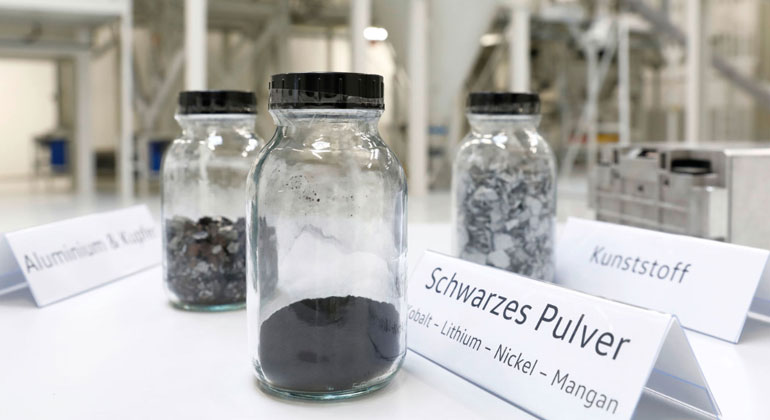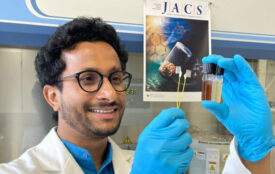Volkswagen-led research team to recycle batteries multiple times for the first time
The aim is the permanent recovery of valuable materials to increase sustainability and security of supply
Partners from the industrial and scientific communities want to jointly prove that the most valuable components of traction batteries can be recovered and reused several times in succession through recycling. The HVBatCycle research consortium has the goal of keeping cathode metals, electrolyte and graphite permanently in a closed material cycle (closed loop). Under the leadership of the Volkswagen Group, TANIOBIS GmbH, J. Schmalz GmbH and Viscom AG are working together with researchers from RWTH Aachen University, TU Braunschweig and the Fraunhofer Institute for Surface Engineering and Thin Films (IST) for three years to research and develop the necessary processes. The project is funded by the Federal Ministry for Economic Affairs and Climate Action.
Michael Kellner, Parliamentary State Secretary: “European battery production can only be successful if it focuses on sustainability in as many areas as possible. Sustainable batteries are crucial for an energy and transport transition that is guided by high environmental and social standards.”
Sebastian Wolf, Chief Operating Officer Battery Cell at Volkswagen AG, explained: “The recycling of batteries and production rejects makes a decisive contribution to securing the supply of raw materials for our planned factories. Through the HVBatCycle project, a holistic view of the recycling processes and thereby the implementation of the closed loop of battery materials is being prepared.”
Closed raw material cycle and multiple recycling
In order to have to use fewer materials from primary sources such as mines or salt flats, essential raw materials are to be recovered not just once, but several times. To this end, battery cells made from recycled material are recycled again, thereby also proving that even multiple recycling runs have no influence on the material quality. Closing the loop requires complex interdisciplinary processes. For efficient and ecologically and economically sensible recycling, all processes must be coordinated with each other in order to produce sorted and high-quality secondary materials under the highest safety requirements. This is about scalability and economic efficiency in particular.
Independence through decentralisation, advantages through use of secondary materials
The consortium project focuses on the mechanical-hydrometallurgical recycling route, which is characterised by low energy requirements and the possibility of a comparatively simple decentralised distribution of certain recycling processes in Europe. This favours a local circular economy and secures strategically important raw materials, which significantly reduces Europe’s dependence on other regions of the world. The HVBatCycle project aims to identify efficient processes and innovative solutions that ensure the establishment of an end-to-end value chain with high economic efficiency while, at the same time, maximising recycling and energy efficiency and minimising environmental impact.
Automation of the dismantling processes and recovery of the electrode material
Concrete innovative development approaches lie in a demand-oriented – that is, economically optimised – discharge and a largely automated dismantling of declining battery systems down to cell or electrode level. This also includes an almost loss-free separation of active material and carrier foils as well as the recovery of graphite and highly volatile electrolyte components.
In the following hydrometallurgical processing of the “black mass”, which consists of graphite and battery metals, using water and chemical solvents, the focus is on early and selective extraction of the lithium in soluble form as well as leaching, precipitation and refining of contained metals as a mixed hydroxide concentrate. Here, in connection with the renewed material synthesis of cathodic active material, it will be investigated whether the separation of metal compounds is really necessary to produce new, fully high-performance cathode material.
The research work on the processing of the electrolyte and the graphite is intended to show, through the development of suitable processes, that important electrolyte components and the graphite can also be efficiently processed and used again in battery-suitable quality in cell production. All process steps are holistically accompanied by an ecological and economic life cycle analysis.








